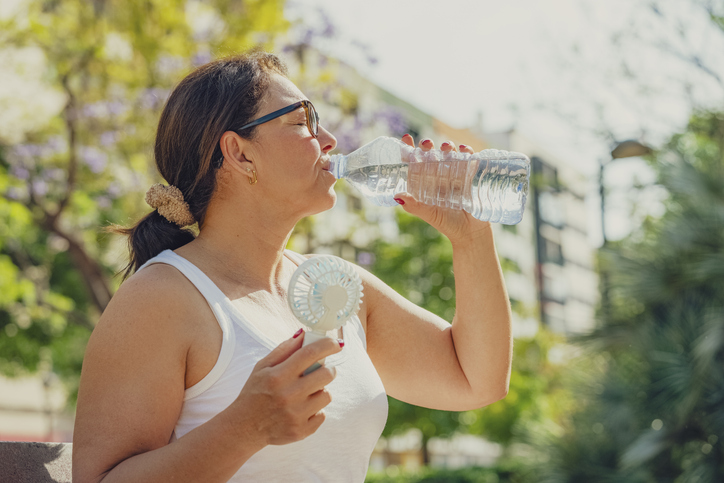Staying Active in the Summer Heat: Tips to Keep You Safe and Healthy
July 15, 2025
Tags: heat intolerance
Summer is the perfect season to get outside, soak up the sunshine, and stay active. But, rising temperatures can also bring serious health risks if you're not careful. Whether you're running, biking, gardening, or simply enjoying a walk, it’s important to take extra precautions to protect yourself from heat-related illnesses.

In this article, Bryce Wasik, exercise physiologist with Riverside Cardiopulmonary Rehab, shares practical tips to help you stay safe, hydrated, and healthy while staying active during the hot summer months.
The Shift from Winter to Summer: Important Considerations
In winter, outdoor activity is often limited to tasks like shoveling snow and clearing sidewalks, while summer brings yard work, plant care, and pool maintenance. Some people substitute these summer chores for their usual exercise routines, but this can lead to a loss of progress in areas like muscle development and cardiovascular fitness.
“If you’re building up cardio, with walking, jogging, biking, that's all great to do during the summertime,” states Wasik. “However, there are some risks related to heat. For example, someone who has heart issues may have an increased heart rate, their blood pressure will go up. There is just going to be more strain on their heart.”
Avoiding (and Recognizing) Heat Exhaustion and Heat Stroke
With heat stroke, body temperature rises dangerously but can often be managed if treated quickly and cooled down. Heat exhaustion is slightly less severe but still serious if untreated, as the body struggles to cool itself. Rapid cooling is essential for both conditions.
Wasik offers tips to avoid heat stroke, such as wearing light, breathable clothing when engaging in outdoor activities like yard work, biking, or walking—to help manage sweat and stay cool. It's also important to have water readily available and take regular rest breaks, especially if you start feeling clammy or notice your body struggling to cool down.
“If you’re experiencing dizziness, fatigue, nausea, muscle cramps, a clammy feeling, start to go pale, or your heart is racing, those are heat stroke signs and symptoms,” he explains. “Depending on how severe the symptoms are, you may need to go to the emergency room or call 911. While awaiting help, immediately take a break and sit down in a shady area, even if it's right next to a tree.”
Best Time to Perform Activities: Avoid the Midday Hours
The best times to exercise in the summer are early mornings or late evenings, when temperatures are cooler and the sun isn’t at its peak. Midday hours (around 11 a.m. to 3 p.m.) are hottest, with minimal shade and little wind, increasing the risk of overheating.
“Check on the weather. If it's going to be a solid 90-plus degrees, consider staying where it’s cool. You’ll want to look into the air quality index as well,” advises Wasik. “Still, it’s important to get some exercise if you can and when it’s safe. Lean into your intuition and perform activities during the mornings when it's a bit cooler.”
Click here for more information on Riverside Heart and Vascular services.